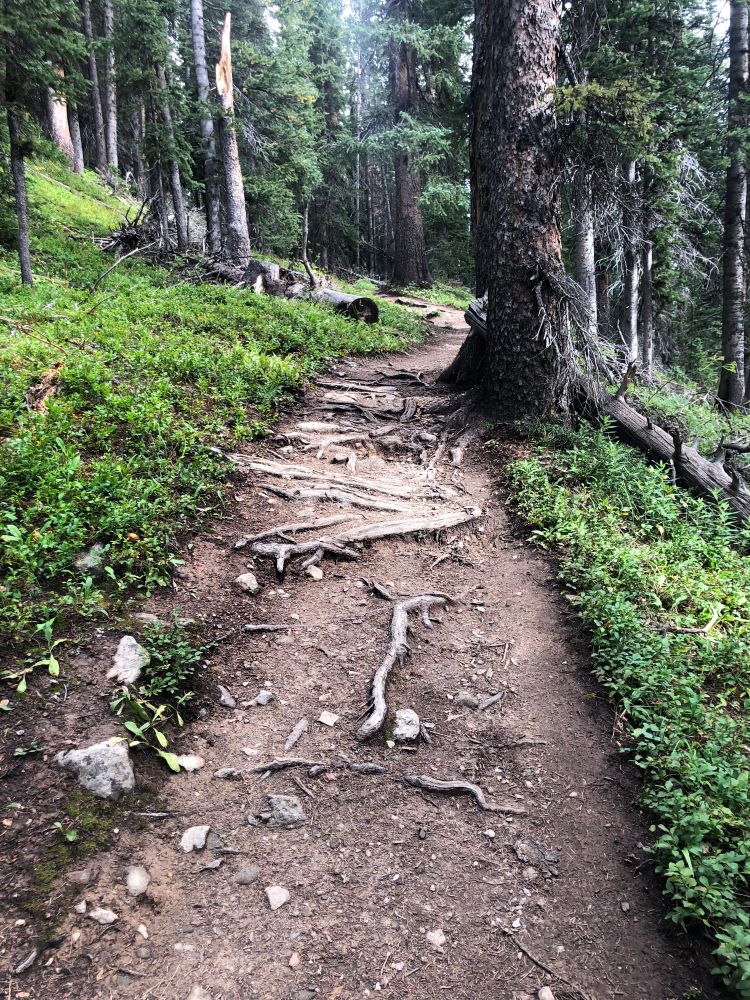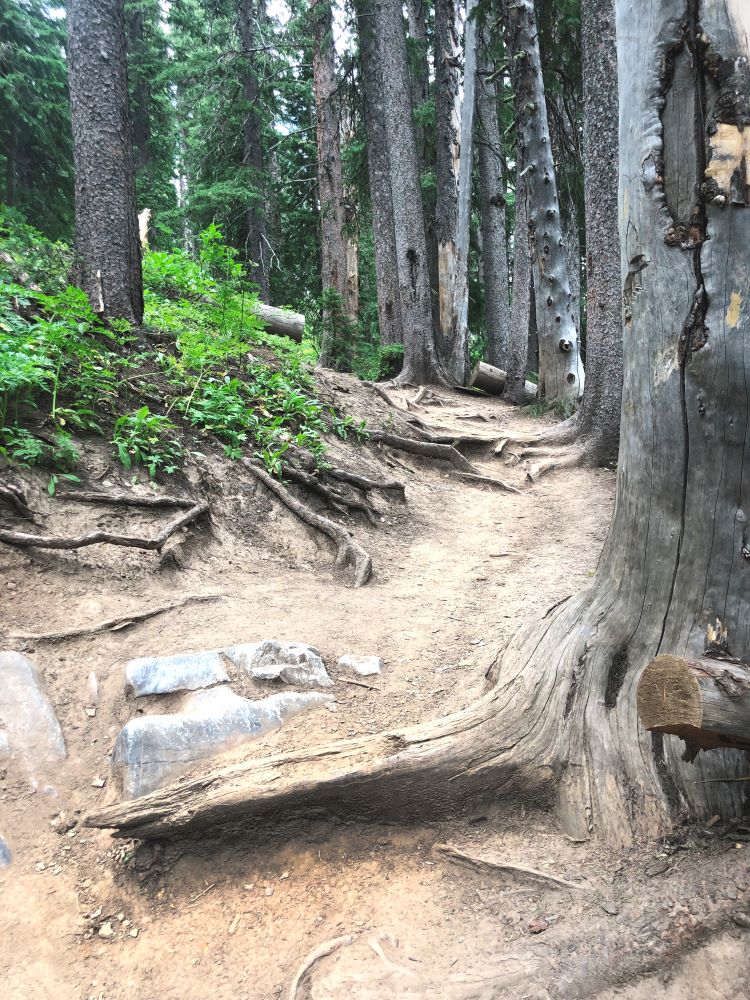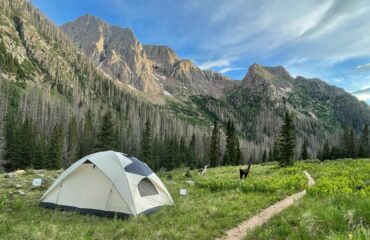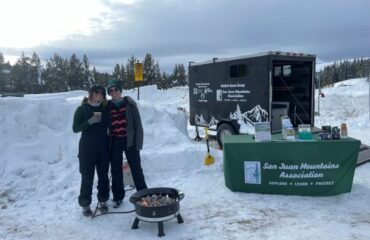
By SJMA Forest Ambassador, Jojo Matson
Alpine tundra ecosystem services
May you be mindful that the alpine tundra is an incredibly special place for our entire ecosystem near and far. Everything underneath your feet is alive. The tundra ecosystem acts as a giant and delicate sponge created by a network of roots reaching up to two feet deep. This sponge holds our snowpack through the winter and reduces avalanche potential. It holds our soils together allowing moisture from snowmelt and spring monsoon storms to absorb into the ground instead of running off or triggering a mudslide. What most of you might notice are the abundant flower varieties that feed large populations of pollinators and herbaceous animals.
Every impact to that delicate sponge compresses the network of roots. The more compressed it becomes, the less effective it is at holding the ecosystem together. Look along the trail on the edges of the footpath and see how far it has compressed from the surrounding soil from feet and tires. Notice areas of increased water flow in the trail and the rapid erosion that takes place within a short amount of time. Once the erosion begins, it is very hard to stop on its own and is amplified and widened when we try to avoid the impacted areas. At some point, the impact might be irreversible, and the trail will become a large gully for water runoff.
May you be mindful where your feet, your furry friend’s feet, or your tires go today.
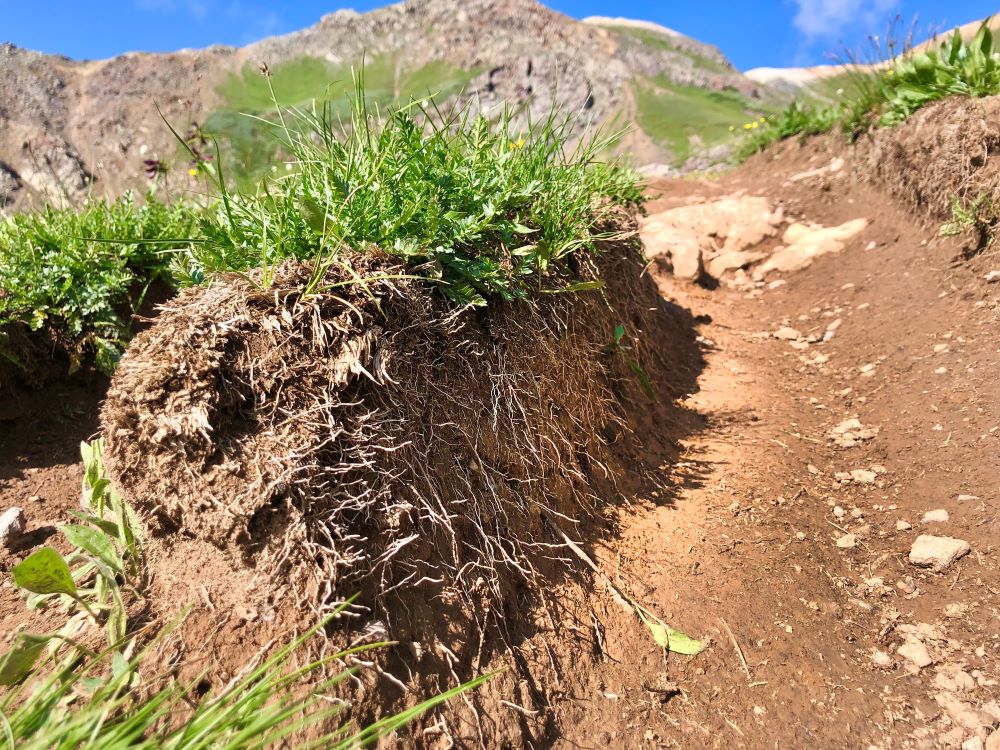
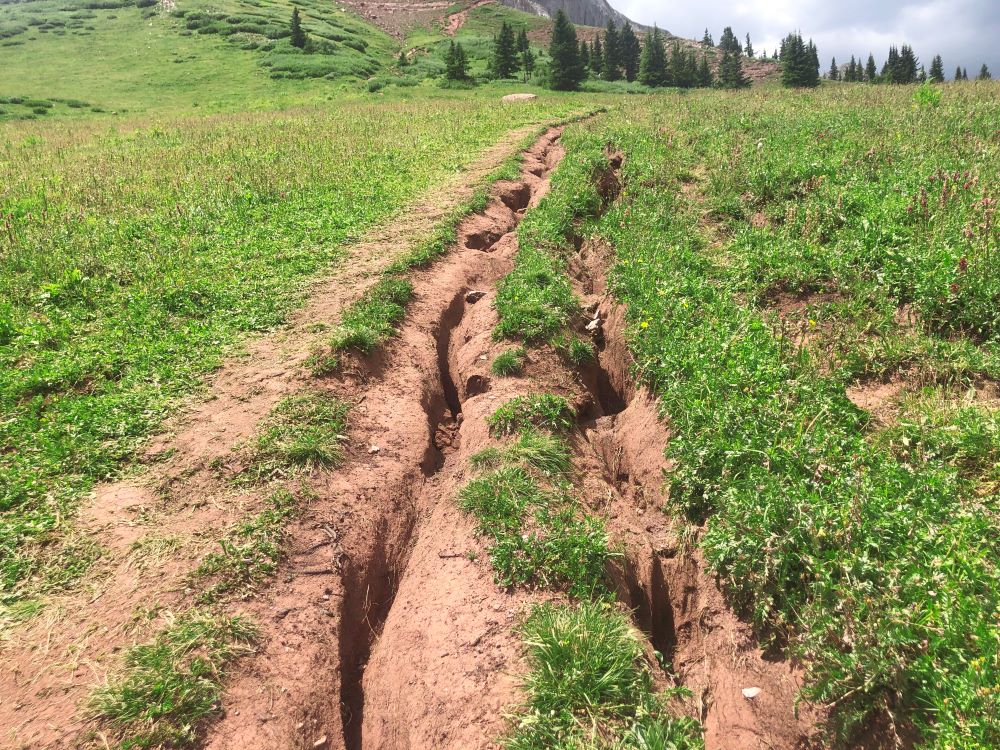
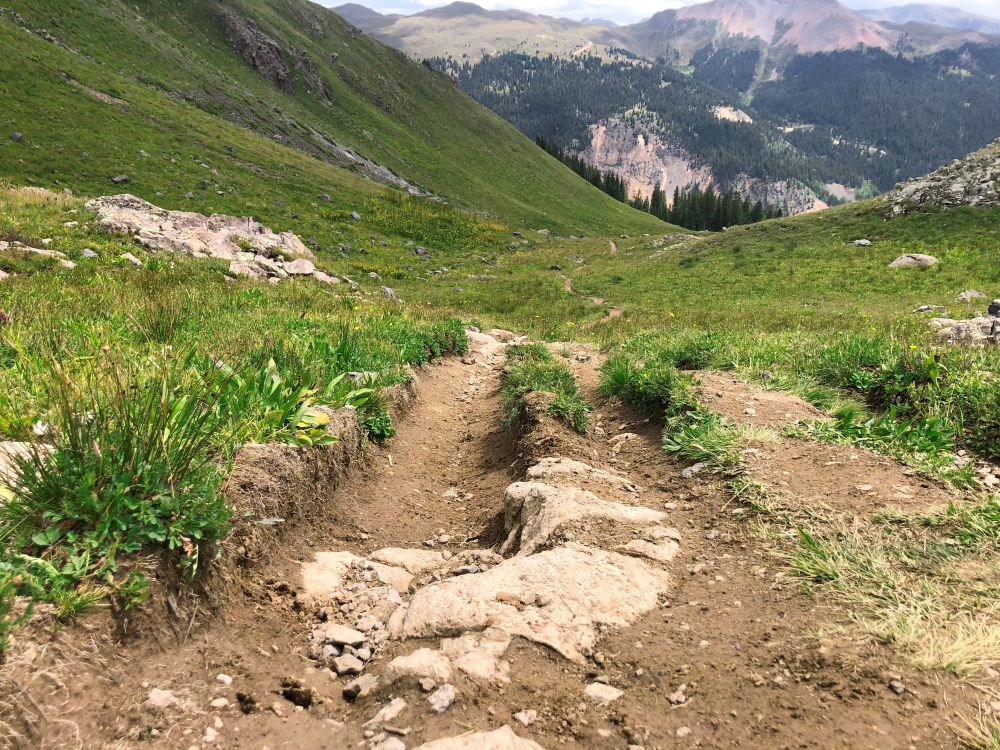
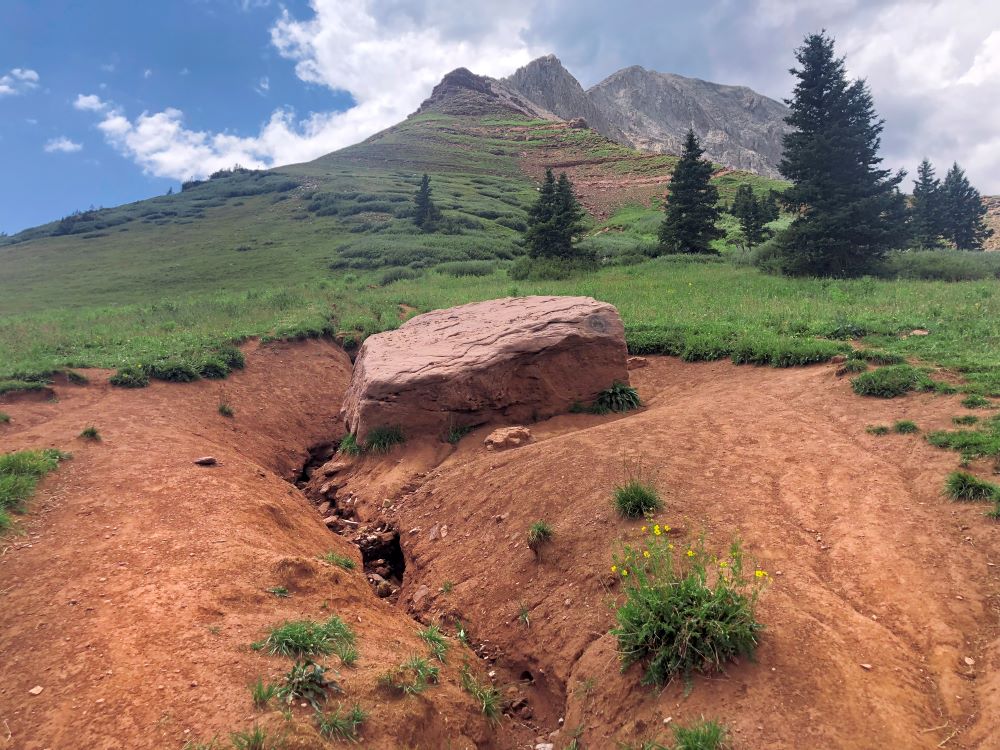
Alpine tundra, visitors in an ecosystem homestead
May you be mindful that the alpine tundra is a unique and diverse ecosystem that supports lifeforms near and far in an incredible balanced network of traveling and permanent dwellers. Some of these neighborhoods are confined to the tops of our mountains and are bound by the environmental boundaries of elevation, temperature, and water. This neighborhood is a collection of specialized flowers and plants and the specialized creatures that eat them. One you may be familiar with is the pika, a small and adorable furry creature that greets you as you enter the high country with loud chirps. The pika is very special because it can only survive in our high cool mountaintops. They cannot withstand temperature above 77 degrees F. They also do not sleep the winter away but survive awake underneath the snowpack. It spends all summer collecting, drying, and storing plants in stashed piles underneath rocks all over the tundra. Their knowledge of each plant’s necessary drying and storage time is miraculous. All the while, they spread seeds and propagate the environment they need to survive in the next year. They are as brilliant as they are adorable.
When you visit the tundra, you will notice there are not many places to hide. A few boulders, scree rock slopes, and valleys of flowers. The pikas have storage stacks that are in safe regions for them to use later. When our feet or out furry friend’s feet go near or invade the storage areas, it can lead to the pika getting hurt or stopping collection of food at that location.
May you be mindful while you visit the tundra where your feet and your furry friend’s feet go. We are there for a short time, and the pika calls it home.
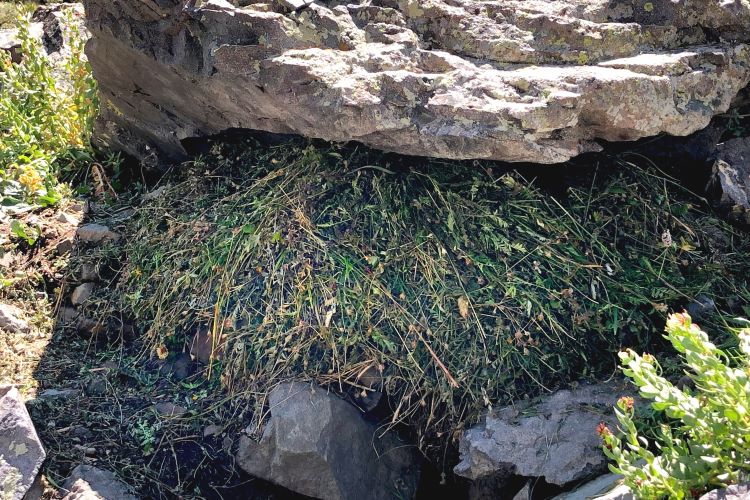
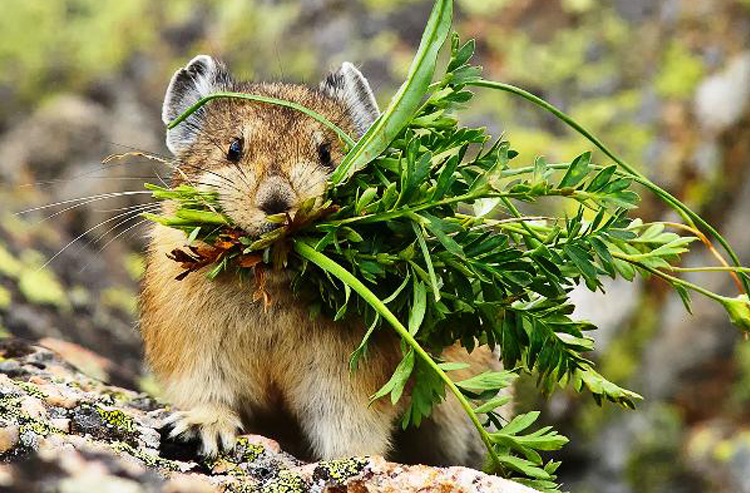
The heartstrings for the trees
May you be mindful that the San Juan Forest is a uniquely biodiverse ecosystem ranging from a dry desert range to the high alpine mountaintops. Everything under your feet is alive including the streams, soils, and the network of mycorrhizal and root systems holding the soils together. Every change in elevation and moisture creates a specialized ecosystem composition that is as unique as a fingerprint to anywhere else.
Notice the changes to the areas that have seen impacts from repeated use to the areas that have been left untouched. Notice what life does or does not survive underfoot. See that the giant roots that grow across the trail are the heart strings for the beautiful trees that stretch above you. Their roots are not deep, they spread wide as they grip to the side of a mountain. These trees are already taxed from impacts of smoky air, insect infestations, and rising temperatures all while they do the important job of stabilizing our mountains and cleaning our air.
May you be mindful of those heart strings while you are out underneath their canopy.
